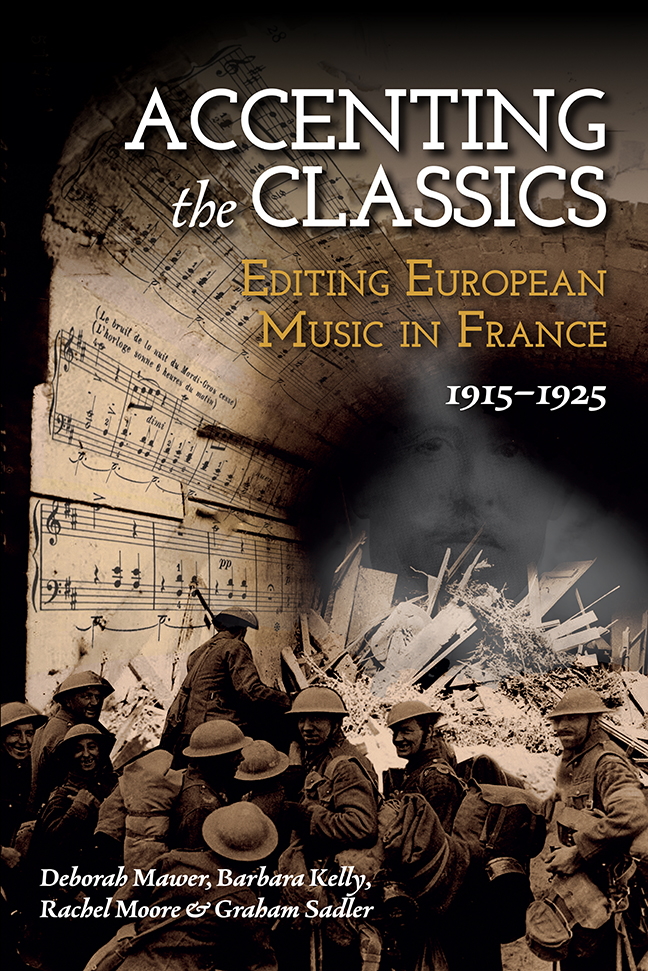Book contents
- Frontmatter
- Contents
- List of Figures
- List of Tables
- Notes on Co-authors
- Acknowledgements
- List of Abbreviations
- Note on the Text
- Introduction
- Part I Durand and His Édition Classique
- Part II Composer–Editor Case Studies
- Part III Beyond Editing: Pedagogy, Performance, Composition
- Afterword
- Select Bibliography
- Index
8 - Debussy's Homage to Chopin: As Editor, Performer and Composer
Published online by Cambridge University Press: 10 January 2024
- Frontmatter
- Contents
- List of Figures
- List of Tables
- Notes on Co-authors
- Acknowledgements
- List of Abbreviations
- Note on the Text
- Introduction
- Part I Durand and His Édition Classique
- Part II Composer–Editor Case Studies
- Part III Beyond Editing: Pedagogy, Performance, Composition
- Afterword
- Select Bibliography
- Index
Summary
Like Chopin, [Debussy] played in a perpetual half-light, but with a full and intense sonority, without any harshness in the attack. The scale of his nuances went from triple piano to forte without ever obscuring sonorities or losing the subtlety.
Debussy's lifelong admiration for Chopin is well known. It was instilled by his first piano teacher, Mme Mauté, who claimed to have studied with Chopin, and then further stimulated under Antoine Marmontel's tutelage, while he was a student at the Paris Conservatoire. Scholars have observed the synergies between Debussy's distinctive piano writing and Chopin's style and have located that influence throughout his career, but particularly in the late Études (1915), which are dedicated to Chopin. They have mentioned too, often in passing, that Debussy edited Chopin's music for Durand's Édition Classique as he was working on his own Études. However, few people have really looked at Debussy's editions in detail to see who his models were and to what extent he followed any particular existing source, relying instead on the composer's sometimes outspoken comments in his letters and his prefaces. This chapter considers Debussy's ‘reading’ of Chopin as an editor, performer and composer and the extent to which his own ‘French’ sensibility and ‘accent’ are evident in his editions. It will place this personal musical affinity for Chopin within the wider context of the Polish-French composer's status in France, particularly during the First World War with the invasion of Warsaw in 1915. It also considers contemporary literary depictions of Chopin, writings to mark the centenary of his birth in 1910, Édouard Ganche's acclaimed biography of the composer in 1913 and wartime writings in which Chopin's dual Polish and French status takes on a poignant national and indeed transnational significance.
Chopin sources for Debussy's edition
The plethora of Chopin sources constitutes a complex topic in itself. Chopin authorities including John Rink, Christophe Grabowski, Jean-Jacques Eigeldinger and Roy Howat have shown that the composer produced multiple manuscripts of the same works, which resulted in first editions that were published in France, Germany and Britain containing tangible differences. Chopin frequently changed his mind about the precise details of a work, giving autograph manuscripts to his students, who became authorities on their maître after his premature death. As a result, the often-competing authority of numerous disciples has led to the establishment of different performing schools, further confounding the multiple texts in circulation.
- Type
- Chapter
- Information
- Accenting the ClassicsEditing European Music in France, 1915-1925, pp. 219 - 252Publisher: Boydell & BrewerPrint publication year: 2023

